2017 Ford F-150 Raptor Review - Apex Predator

2017 Ford F-150 Raptor Supercab
In the coming years, we will begin driving riding around in the quiet electric embrace of autonomous convenience. We will look back on the 20-teens as a golden age when the last ounces of performance were wrung out of the internal combustion engine and automakers created cars for every conceivable market niche. New and presently unknown products will one day surprise and delight. But let’s stick with the present, which is a special time for auto enthusiasts.
Consider that the 5,600-pound 2017 Raptor is as fast to 60 miles per hour as the 2007 Mustang GT. Forced induction or not, the Raptor labors under a one-ton weight disadvantage, an unknown coefficient of drag penalty, and a 30-percent displacement deficiency versus the original pony car. A decade ago there was not a single stock vehicle available at any price capable of bounding through the desert at freeway speed that was also able to head back to civilization to pick up the kids from school.
Not convinced? In November, Ford raced a Raptor in the Baja 1000 Stock Full class. It got a roll cage, fuel cell, and a few other tweaks. Of almost 250 entries, the Raptor was among 142 rigs that finished the race. And after taking the checkered flag, it returned under its own power to Ford’s Arizona Proving Grounds 400 miles to the north.
The superlatives associated with Raptor are legion. What’s not to like?
This Raptor nearly converted me into a criminal. It fueled my desire to shortcut U-turns by banging across medians (thank you, officer Rodriguez for accommodating my boyish enthusiasm), driving through hedges (ok, I didn’t do that), skid turning through intersections (was that a dream?), and generally intimidating my way from point A to point B. Had I driven the Raptor one more day, I surely would’ve become a proper menace. And that was just what it elicited in daily on-road driving.
The Raptor is like an eager puppy constantly straining against its leash. Take it off, and the Raptor will sprint for the nearest patch of dirt, sand, rock, or mud. As joyful as it is on-road, this thing wants to roll around in the muck.
Unmistakable
There are now seven different front-end treatments for the F-150’s 16 trim levels. That’s what you can do when you sell nearly a million units a year. Raptor gets its own front grille, bumper, and lights — and they are all business. Blacked-out headlamps flank a mesh grille with familiar black Ford lettering spanning its four-foot width. The signature inset LEDs remain, as does the prominent and purposeful front skid plate.
The subtly redesigned front bumper contributes to a modest increase in approach angle, which moves up to 30 degrees from 29.8 in the outgoing model. It incorporates active upper and lower grille shutters and includes functional hood and fender vents on its way to delivering a 5-percent aerodynamic improvement. If the first-generation Raptor offered a clean incorporation of aftermarket performance parts with a standard F-150, the 2017 looks like the F-150’s native form. I’ll take mine without the $1,075 graphics package. Regardless, the second-generation Raptor is a fully realized vision.
Waiting for your touch
One of my favorite standard features inside this truck is the bank of six overhead mounted upfitter switches. These are great for anyone who wants to install aftermarket lighting, an air compressor, or other tools but does not wish to deface the interior of their $60,000 truck. They are backlit and can be configured to run with or without the ignition on. It’s a clever installation and the switches have a nice positive detent.
It’s the engine, suspension, and body that make the Raptor a Raptor. And for those who want little more, Ford is listening. For $50,155, you can secure all the mechanical goodies in a base Supercab, which has a console between an 8-way power driver’s seat and a manually operated passenger seat. AC, Sync, 110-volt/400-watt Power Inverter, and steering wheel controls are standard. For the purists and more budget-minded, such a Raptor still a Raptor makes.
Dealers will not be availing themselves of many base Raptors. Most will be more like our tester, which arrived with Ford’s 802A package ($9,345). Some highlights of this 30-feature package include 10-way heated/cooled front seats, leather, Sync 3, 4.10 front axle with Torsen differential, 360-degree camera (great for parking and navigating technical obstacles), blind spot detection, integrated trailer brake controller, LED box lighting, LED sideview mirror spotlights (a useful touch), memory seats/pedals/mirrors, Intelligent Access, power folding sideview mirrors with turn signals, power tilt/telescoping steering column, Pro Trailer Backup Assist, Sony audio, and voice-activated navigation.
It’s a comfortable, quiet, well-appointed interior.
Replacement for displacement
For those concerned about forced induction, remember turbocharging is a mature technology with a lengthy history in commercial and military applications that feature more punishing duty cycles than a Raptor will ever see. Turbochargers are not only robust, they’re reliable. Just get your oil changed on schedule and enjoy the additional power, weight savings, and improved fuel economy.
On-road ops
Get on the gas and Raptor squats and accelerates with a willing roar and a torrent of thrust. A variety of outlets have measured 0-60 times in the low fives. As compared to contemporary go-fast cars, Raptor is still rapid. But none of these cars, not even the Grand Cherokee SRTs of the world, provide Raptor’s commanding perspective of the road.
No other stock vehicle rides quite like a Raptor. This truck combines the acceleration of a respectable sports sedan with a reinterpreted version of ’90s luxury. It would not be an exaggeration to call the ride plush, but that is part of what it takes to balance trophy-truck-like wheel travel (13.0 inches in front, 13.9 inches in at rear) and everyday practicality. For example, the front end is connected to the rear end, meaning a slight twist of the wheel at highway speed generates an almost immediate but muted tail wag. Whereas in an old Grand Marquis, a three-count was required between steering wheel movement and an exaggerated rear-end swing. Where an old Panther platform car wallowed, Raptor is tight. It soaks up road surface imperfections with ease and passes limited NVH to occupants. It has an utterly unique ride with undeniable charm.
Taking a Raptor into corners at speed may be a harrowing experience for passengers, but it’s great fun for the front left-seater. Upon corner entry, the truck immediately begins to lean. Maintaining momentum into the apex, the truck progressively delivers more and more lean. But the steering is communicative throughout, allowing the committed driver to wait, then mash the throttle to bring the truck authoritatively out of the corner. Yes, you can get the tail out in a dry, paved corner. In more restrained on-road operation, body lean is ever present through corners, yet progressive and well controlled. But restraint is difficult; as they say, power corrupts and absolute power corrupts absolutely.
Home sweet home
Raptor is capable of tackling technical routes and obstacles, but its reason for being is high-speed desert running, and the San Felipe Wash provides the perfect course. This broad, dry wash cut by a millennia of flash flooding runs for miles with lengthy sight-lines and moderate hazards. Its hard-packed sand is topped by intermittent sections of fresh blown sand and boulders up to the size of volleyballs. Its most challenging obstacles are the camouflaged berms created by lesser floods that fail to fill the entire wash. These smaller rains make a dry meandering water course inside the broader wash that create vertical drops — or rises, depending on your direction of travel — up to three feet high. It is the perfect place to let the Raptor fly.
One of several notable improvements to the suspension is the replacement of its capable 2.5-inch-diameter Fox shocks with 3-inch units. These progressive nine-stage Fox internal bypass coil-overs contribute to the truck’s increased wheel travel. They are also provide 44 percent more volume, enabling better heat dissipation, the archenemy of any shock absorber.
Raptor offers a two-speed transfer case working in conjunction with six terrain management settings to optimize traction based on driving surface. Unlike most T-cases, this one supports all-wheel drive through a clutch-based torque-on-demand set up, as well as a mechanical locking system to support traditional 4-High and 4-Low.
The software-based terrain management system is operated through steering-wheel-mounted buttons linked to a sub-screen in the configurable display in center of the instrument cluster. Based on the driver’s selection of Normal, Weather, Mud & Sand, Baja, and Rock Crawl, Raptor will automatically select the appropriate four-wheel drive setting as well as configure the transmission, braking, and stability control to optimize performance. Ford has done an admirable job simplifying its off-road settings, preferable for example to the Toyota Tacoma TRD-Pro Off Road. Raptor also offers three steering settings — Normal, Sport, and Comfort — which offer discernible differences and are worth matching to one’s driving intentions.
How does it all work off-road?
The experience began with a scouting run down the wash at moderate speed in 2WD, steering set to normal, and traction control off. Having re-familiarized myself with the wash and its obstacles, it was time to turn around and bring it back. Retaining the same settings, I hit the wash fast. The truck ripped across the desert. Building confidence with each passing tumble weed, the truck found a rhythm gliding across the occasional whoops and casually sliding through long sweeping corners. But only fear stood between a fun afternoon and me exceeding my capabilities.
What happens when you put it in Baja Mode?
Baja Mode delivers aggressive throttle response and holds gears impossibly long, ensuring the truck operates at the top third of the tach. Traction control is also relaxed and 4-High is automatically selected. Beginning my first run in Baja Mode, I depressed the right pedal and the truck exploded to life, refusing to up-shift prior to red-line. Baja Mode essentially informs its operator that if they are not willing to push it, they will not earn the right to the next gear. Baja Mode heightens the entire experience with violence. Ford should have Baja Mode programmed to automatically disable the stereo to ensure occupants get the full aural experience. But even after all the brutality, I probably didn’t get down the wash much faster than before.
If smiles per mile were used to identify the best off-road setting for this environment, I’d take 2WD with traction control deactivated. Perhaps with a few more iterations, I would have warmed to Baja Mode. But 2WD sans traction nannies made for a more tail-happy experience without the hair-trigger throttle and freakish responsiveness of the shift-averse 10-speed. If you are looking for the setting most likely to induce PTSD, Baja Mode is for you.
In memoriam
There may have been a couple close calls, but nobody was injured as a result of my week with the Raptor. And although I generally find endearing qualities in the vehicles I test, this one was different. When Ford collected it from the curb in front of my house, a little piece of me went with it. Is it perfect? Of course not, but I cannot help thinking we can now see the development summit even though this rig will one day be surpassed as the ultimate stock off-road truck. It’s not very far in the distance. And that’s a little sad.
[Images: © 2017 Garrett Martin]

Twenty year auto industry professional. Currently CEO at Turbo International, the premier American manufacturer of OEM replacement turbochargers for the global aftermarket.
More by Seth Parks
Latest Car Reviews
Read moreLatest Product Reviews
Read moreRecent Comments
- Redapple2 I gave up on Honda. My 09 Accord Vs my 03. The 09s- V 6 had a slight shudder when deactivating cylinders. And the 09 did not have the 03 's electro luminescent gages. And the 09 had the most uncomfortable seats. My brother bought his 3rd and last Honda CRV. Brutal seats after 25 minutes. NOW, We are forever Toyota, Lexus, Subaru people now despite HAVING ACCESS TO gm EMPLOYEE DISCOUNT. Despite having access to the gm employee discount. Man, that is a massive statement. Wow that s bad - Under no circumstances will I have that govna crap.
- Redapple2 Front tag obscured. Rear tag - clear and sharp. Huh?
- Redapple2 I can state what NOT to buy. HK. High theft. Insurance. Unrefined NVH. Rapidly degrading interiors. HK? No way !
- Luke42 Serious answer:Now that I DD an EV, buying an EV to replace my wife’s Honda Civic is in the queue. My wife likes her Honda, she likes Apple CarPlay, and she can’t stand Elon Musk - so Tesla starts the competition with two demerit-points and Honda starts the competition with one merit-point.The Honda Prologue looked like a great candidate until Honda announced that the partnership with GM was a one-off thing and that their future EVs would be designed in-house.Now I’m more inclined toward the Blazer EV, the vehicle on which the Prologue is based. The Blazer EV and the Ultium platform won’t be orphaned by GM any time soon. But then I have to convince my wife she would like it better than her Honda Civic, and that’s a heavy lift because she doesn’t have any reason to be dissatisfied with her current car (I take care of all of the ICE-hassles for her).Since my wife’s Honda Civic is holding up well, since she likes the car, and since I take care of most of the drawbacks of drawbacks of ICE ownership for her, there’s no urgency to replace this vehicle.Honestly, if a paid-off Honda Civic is my wife’s automotive hill to die on, that’s a pretty good place to be - even though I personally have to continue dealing the hassles and expenses of ICE ownership on her behalf.My plan is simply to wait-and-see what Honda does next. Maybe they’ll introduce the perfect EV for her one day, and I’ll just go buy it.
- 2ACL I have a soft spot for high-performance, shark-nosed Lancers (I considered the less-potent Ralliart during the period in which I eventually selected my first TL SH-AWD), but it's can be challenging to find a specimen that doesn't exhibit signs of abuse, and while most of the components are sufficiently universal in their function to service without manufacturer support, the SST isn't one of them. The shops that specialize in it are familiar with the failure as described by the seller and thus might be able to fix this one at a substantial savings to replacement. There's only a handful of them in the nation, however. A salvaged unit is another option, but the usual risks are magnified by similar logistical challenges to trying to save the original.I hope this is a case of the seller overvaluing the Evo market rather than still owing or having put the mods on credit. Because the best offer won't be anywhere near the current listing.



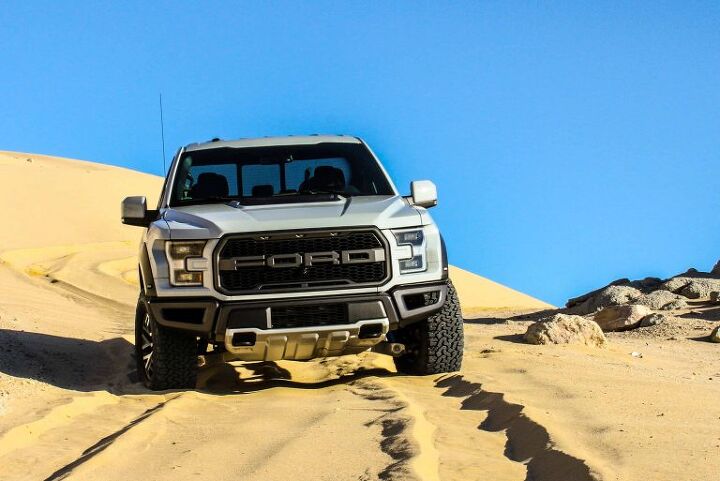

























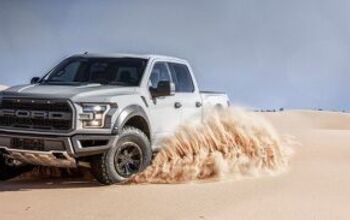
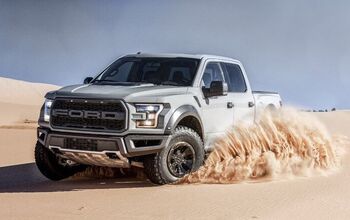
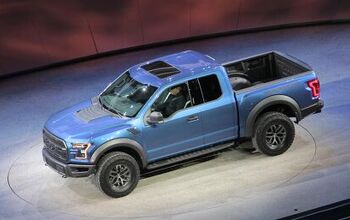
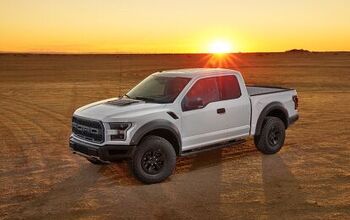










Comments
Join the conversation
Junk. I would much rather have a base model Chevy Silverado or F150. Especially the Silverado.
@BAFO/RYAN - It's specialized, so is rock crawling and mudding, but you'll never see a "turnkey" type of either of those from a major/global car make. Nor is desert running, pre-race running "type" or trucks anything new, nor unpopular, anywhere there's pickups and an aftermarket, including Australia. But stating the 79 series and Raptor are purdy much the same thing 'cause "4X4", is a goofy oversimplification, but normal for you two goofs.